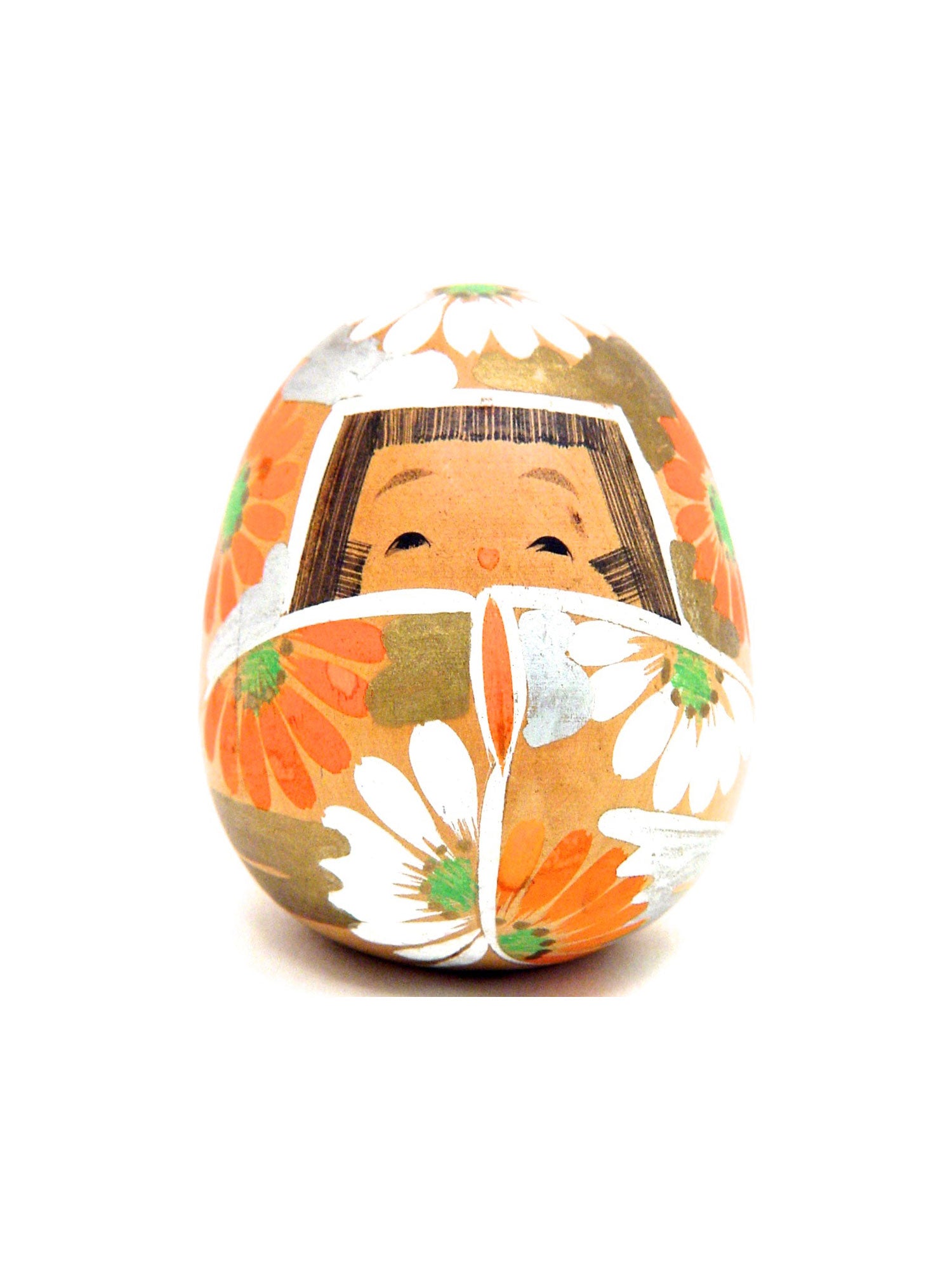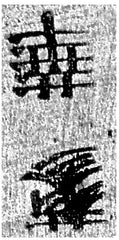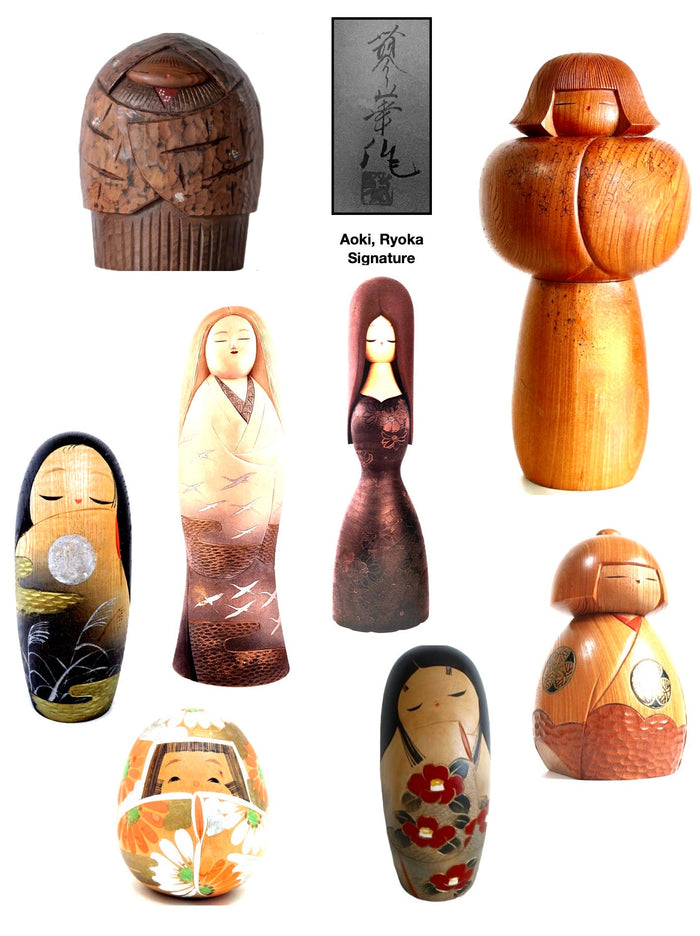
"Hime Daruma | Female Daruma"
A traditional subject made into Sosaku Kokeshi. Modeled after Bodidharma, and is a female manifestation of this religious figure. It was not unusual to find just the face of Hime Daruma, surrounded by seasonal flowers and artistically incorporated into Sosaku Kokeshi.
Artist's Signature:


Artisan
Woodworker: Aoki, Ryoka
Biographical History:
She was born in Gunma prefecture in 1931. Her real name is Toshiko. "Ryo" of her pseudonym was taken from the name of her teacher Mr. Ryoshu Nozawa who is a painter of Japanese-style pictures. In 1958, she started the work of Creative Kokeshi. Eight pieces of her works were bought by the Crown Prince and Crown Princess in 1975 and 1983. The prize winner in 1975; of the Minister of Education for "Hana Tenshi". In 1977 she won the Japan-Taiwan Cultural Exchange Prize. In 1980 and 1981 she received the Prize of Minister of International Trade and Industry. In 1981 the Prize of the Ministry of Agriculture and Forestry and Fishery. Member of the Nippon Kokeshi Artistic Handicraft Association. Eight of her dolls were added to the collection of the Crown Prince and Princess of Japan in 1975 and 1983, respectively.
Collector's note – descriptive qualities, standard characteristics & ornamentation styles:
Two of his most beloved figures were one, entitled, “Hime Daruma | Female Daruma”, modeled after Bodhidharma, and is a female manifestation of this religious figure. It was not unusual to find just the face of Hime Daruma, surrounded by seasonal flowers and artistically incorporated into Sosaku Kokeshi.
Additionally, the doll entitled “Mangetsu | Full Moon”, is of a young girl or “Chuushuu no Meigetsu”, also called Jugoya, the night of the full August moon, in early autumn. The images on several of his seasonal dolls speak of the fall and the use of pampas-like grass, (Sesuki), in the various celebrations. Ancient Japanese had a custom of worshiping the full moon, for it was believed that a full moon was a symbol of a rich harvest which was a cherished custom he wanted to carry forward in several dolls. Additionally, he loved the form of lathe-turned dolls several celebrating the wood from which it was made as well as featuring what he referred to as “unearthly sensibility” in traditional costume and Kimono motifs of waffle-patterned waves and cranes. Finally, he enjoyed portraying diverse hairstyles including long flowing hair of the Heian period as well as figures illustrating elaborate embroidered garments.
Explore & Learn More about Woodworker: Aoki, Ryoka